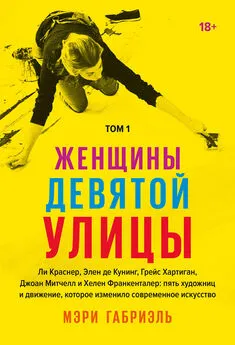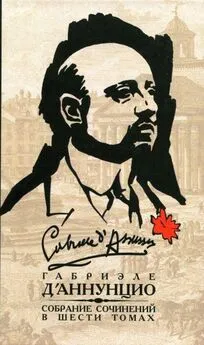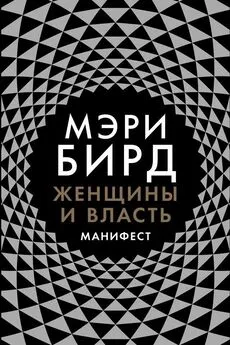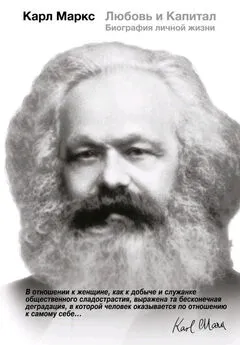Мэри Габриэль - Женщины Девятой улицы. Том 1
- Название:Женщины Девятой улицы. Том 1
- Автор:
- Жанр:
- Издательство:неизвестно
- Год:2019
- Город:Москва
- ISBN:978-5-00146-491-4
- Рейтинг:
- Избранное:Добавить в избранное
-
Отзывы:
-
Ваша оценка:
Мэри Габриэль - Женщины Девятой улицы. Том 1 краткое содержание
На русском языке публикуется впервые.
Женщины Девятой улицы. Том 1 - читать онлайн бесплатно ознакомительный отрывок
Интервал:
Закладка:
56
Steven Naifeh and Gregory White Smith, Jackson Pollock , 372.
57
Lee Krasner, a Conversation with Hermine Freed , videotape courtesy of PKHSC; Lee Krasner, interview by Barbara Rose, AAA-SI, 9; Juanita H. Williams, “Woman: Myth and Stereotype”, 238–39. Даже величайшие мыслители Запада обрекали женщин на подчиненное положение в физическом и интеллектуальном плане. Гегель, например, говорил: «Женщины могут быть образованными, но для высших наук, как философия, и для некоторых произведений искусства, требующих всеобщего, они не созданы». А, по словам Ницше, «мужчина должен быть воспитан для войны, а женщина – для отдохновения воина; все остальное – глупость».
58
Lee Krasner, interview by Barbaralee Diamonstein-Spielvogel, provided by Barbaralee Diamonstein-Spielvogel, interviewer and author, from Inside New York’s Art World (© Dr. Barbaralee Diamonstein-Spielvogel), 204.
59
Nemser, Art Talk , 83; Lee Krasner, interview by Barbara Rose, 1975 GRI; B. H. Friedman, “Lee Krasner”, черновик рукописи 1965, Series 2.4, Box 10, Folder 7, Lee Krasner Papers, AAA – SI, 2; Levin, Lee Krasner , 30; Lee Krasner, interview by Barbara Novak, AAA – SI, 7.
60
Oral history interview with Lee Krasner, November 2, 1964–April 11, 1968, AAA – SI; Levin, Lee Krasner , 38–39; Landau, Lee Krasner: A Catalogue Raisonne , 301.
61
Levin, Lee Krasner , 49–50, 54–56; Ines Janet Engelmann, Jackson Pollock and Lee Krasner , 9; Naifehand Smith, Jackson Pollock , 378.
62
Штетл (в переводе с идиш – «городок» или «еврейское местечко») – небольшое поселение полугородского типа с преобладающим еврейским населением в Восточной Европе в исторический период до холокоста.
63
Levin, Lee Krasner , 13, 59–61.
64
Oral history interview with Harold Rosenberg, AAA – SI; Naifeh and Smith, Jackson Pollock , 377.
65
Levin, Lee Krasner , 92, 95–96; Naifeh and Smith , Jackson Pollock , 378–81; Potter, To a Violent Grave , 64–65.
66
Lillian Kiesler, interview by Ellen G. Landau, AAA – SI, 5; Potter, To a Violent Grave , 65.
67
Levin, Lee Krasner , 62, 80–81; Lillian Kiesler, interview by Ellen G. Landau, AAA-SI, 3; Robert Hobbs, Lee Krasner (1993), 16; Naifeh and Smith, Jackson Pollock , 379.
68
Schapiro, Modern Art, 136; Larkin, Art and Life in America , 360–61; Sidney Janis, Abstract and Surrealist Art in America, 30; Herschel B. Chipp, Theories of Modern Art , 502; Jack A. Hobbs, Art in Context, 502. Первым направлением «современного» искусства в Америке была «Школа мусорных ведер», просуществовавшая примерно с 1907 по 1912 г. Это движение можно отнести к современному искусству в том смысле, что его предметом были уличная жизнь и занятия «маленького человека», а не быт представителей состоятельных слоев общества, которые покупали произведения искусства для украшения домов.
69
Willem and Elaine de Kooning, interview by Peter Busa and Sandra Kraskin, AAA – SI; Hobbs, Art in Context , 505–6; Dore Ashton, The Life and Times of the New York School , 30–31, 36; Chipp, Theories of Modern Art , 506.
70
Lynes, Good Old Modern , 4.
71
Lynes, Good Old Modern , 13–14, 20–21, 32–33.
72
Джордж Элиот (настоящее имя – Мэри Энн Эванс; 22 ноября 1819 г., имение Арбери в графстве Уорикшир – 22 декабря 1880 г., Лондон) – английская писательница.
73
John Bernard Myers, Tracking the Marvelous , 171; Lynes, Good Old Modern , 20, 249; Marquis, Alfred H. Barr, Jr., 272–273.
74
Lynes, Good Old Modern , 43–44.
75
Lynes, Good Old Modern , 447; oral history interview with Lee Krasner, November 2, 1964– April 11, 1968, AAA-SI.
76
Landau, Lee Krasner: A Catalogue Raisonné , 302.
77
Lee Krasner, interview by Barbara Rose, 1972, AAA-SI, 1.
78
Lee Krasner, interview by Barbara Novak, AAA – SI, 11; Levin, Lee Krasner , 67; Lee Krasner, interview by Barbara Rose, 1972, AAA – SI, 1.
79
Terry Miller, Greenwich Village and How It Got That Way , 124.
80
Barbara Rose, Lee Krasner: The Long View , videotape courtesy PKHSC; Levin, Lee Krasner , 49; Deborah Solomon, Jackson Pollock , 112; John Lee Post, interview by author.
81
Naifeh and Smith, Jackson Pollock , 379; Lee Krasner , interview by Barbara Novak, videotape courtesy PKHSC; Lee Krasner, interview by Barbara Rose, 1972, AAA – SI, 1.
82
Lee Krasner, interview by Barbara Rose, 1972, AAA-SI, 1; Lee Krasner, interview by Barbara Novak, AAA-SI, 12; Levin, Lee Krasner , 75–76; Landau, Lee Krasner: A Catalogue Raisonné , 302; Robert Hobbs, Lee Krasner (1993), 17.
83
Levin, Lee Krasner , 75–76; oral history interview with Harold Rosenberg, AAA-SI; B. H. Friedman, Jackson Pollock: Energy Made Visible , 69.
84
Oral history interview with Ludwig Sandler, AAA-SI; Lee Krasner, interview by Barbara Novak, AAA-SI, 11–12; Marquis, Art Czar , 134; “Abstract Expressionism: A Tribute to Harold Rosenberg”, 9. Сол Беллоу сказал о Гарольде: «Я знал, что встретил самого значимого человека, который, однако, вел себя совсем не так, как ведут себя такие люди… [у него был] до абсурдного будничный взгляд на самого себя…»
85
“Abstract Expressionism: A Tribute to Harold Rosenberg”, 9; Sandler, A Sweeper Up After Artists , 182; Marquis, The Art Biz , 124.
86
Natalie Edgar, interview by author, January 20, 2014; Mark Stevens and Annalyn Swan, De Kooning , 222; Gruen, The Party’s Over Now , 172.
87
Lee Krasner, interview by Barbara Novak, AAA – SI, 12.
88
Chandler Brossard, ed., The Scene Before You , 20; Lionel Abel, The Intellectual Follies , 34–35; Howard Zinn, A People’s History of the United States , 386. По словам Зинна, Джон Кеннет Гэлбрейт обвинял в этом «нездоровые корпоративные и банковские структуры», «невыгодную внешнюю торговлю», «экономическую дезинформацию» и «неправильное распределение доходов». Зинн утверждает: «Пять процентов самых состоятельных людей получали около трети всех доходов населения».
89
Peter Clements, Prosperity, Depression and the New Deal , 101–3, 132; Mauritz A. Hallgren, Seeds of Revolt , 271; Isabel Leighton, ed., The Aspirin Age , 286.
90
Hallgren, Seeds of Revolt , 48, 53–54, 64–65, 81, 118, 154, 165, 169, 191; Ashton, The Life and Times of the New York School , 18–19, 54; oral history interview with George Wittenborn, AAA-SI; Terkel, Hard Times, 381–382; Barbara Blumberg, The New Deal and the Unemployed , 17–18; Dorfman, Out of the Picture , 13; Ashton, The Life and Times of the New York School , 54.
91
Giorgio Cavallon, interview by Jack Taylor; Abel, The Intellectual Follies , 36–37; Terkel, Hard Times , 34, 381. Эмпайр-стейт-билдинг в то время было самым высоким зданием в мире, а мост Джорджа Вашингтона – самым длинным подвесным мостом на Земле.
92
Stevens and Swan, De Kooning, 111; Abel, The Intellectual Follies , 34–35; Brossard, The Scene Before You , 20.
93
Terkel, Hard Times , 380.
94
Gerald M. Monroe, “Artists as Militant Trade Union Workers during the Great Depression”, 7.
95
Ross Wetzsteon, Republic of Dreams, 537; Elaine de Kooning and Slivka, Elaine de Kooning , 91.
96
Elaine de Kooning and Slivka, Elaine de Kooning , 92–93; Hayden Herrera, Arshile Gorky , 202–203; Giorgio Cavallon, interview by Jack Taylor.
97
Stevens and Swan, De Kooning , 96–97; Gruen, The Party’s Over Now , 263–64; Nouritza Matossian, Black Angel , 151, 209; Edgar, Club Without Walls , 30.
98
Oral history interview with Harold Rosenberg, AAA-SI.
99
Oral history interview with Irving Block, AAA-SI.
100
Oral history interview with Harold Rosenberg, AAA-SI; Elaine Owens O’Brien, “The Art Criticism of Harold Rosenberg: Theaters of Love and Combat”, 204–5.
101
Naifeh and Smith, Jackson Pollock , 379–380; Potter, To a Violent Grave, 64.
102
May Tabak Rosenberg, interview by interview by Jeffrey Potter, audiotape courtesy PKHSC; Levin, Lee Krasner , 99; oral history interview with Harold Rosenberg, AAA-SI; O’Brien, “The Art Criticism of Harold Rosenberg”, 204n83; Harold Rosenberg and May Tabak Rosenberg, interview by John Gruen, AAA-SI, 7.
103
Dore Ashton, The New York School , 53–54; Terkel, Hard Times , 298.
104
Интервал:
Закладка:





![Мэри Габриэль - Женщины Девятой улицы. Том 1 [Ли Краснер, Элен де Кунинг, Грейс Хартиган, Джоан Митчелл и Хелен Франкенталер: пять художниц и движение, изменившее современное искусство]](/books/1067927/meri-gabriel-zhenchiny-devyatoj-ulicy-tom-1-li-kra.webp)




